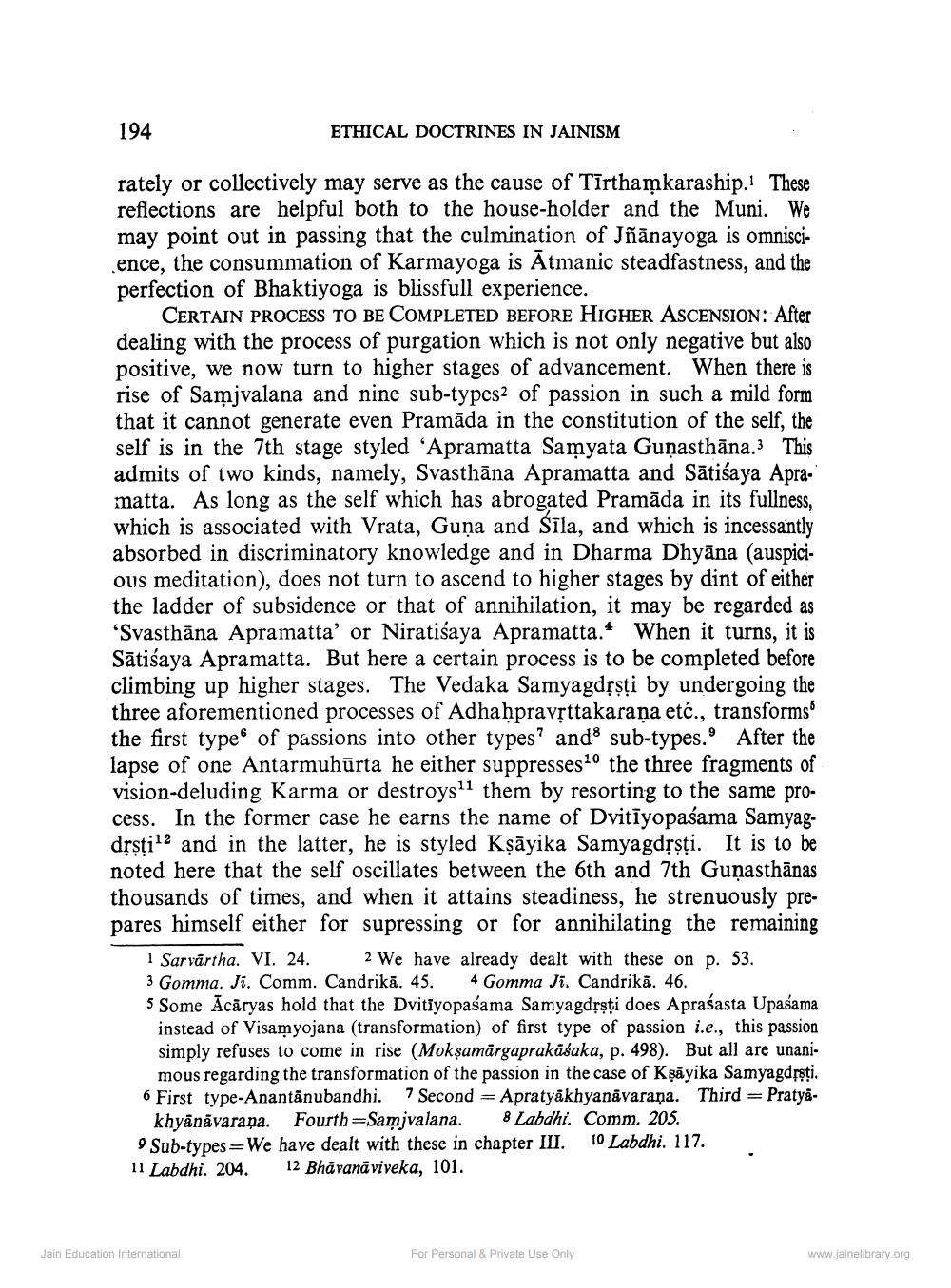________________
194
ETHICAL DOCTRINES IN JAINISM
rately or collectively may serve as the cause of Tīrthamkaraship. These reflections are helpful both to the house-holder and the Muni. We may point out in passing that the culmination of Jñānayoga is omniscience, the consummation of Karmayoga is Ātmanic steadfastness, and the perfection of Bhaktiyoga is blissfull experience.
CERTAIN PROCESS TO BE COMPLETED BEFORE HIGHER ASCENSION: After dealing with the process of purgation which is not only negative but also positive, we now turn to higher stages of advancement. When there is rise of Samjvalana and nine sub-types of passion in such a mild form that it cannot generate even Pramāda in the constitution of the self, the self is in the 7th stage styled 'Apramatta Samyata Guņasthāna. This admits of two kinds, namely, Svasthāna Apramatta and Sātiśaya Apramatta. As long as the self which has abrogated Pramāda in its fullness, which is associated with Vrata, Guņa and Sīla, and which is incessantly absorbed in discriminatory knowledge and in Dharma Dhyāna (auspicious meditation), does not turn to ascend to higher stages by dint of either the ladder of subsidence or that of annihilation, it may be regarded as ‘Svasthāna Apramatta' or Niratiśaya Apramatta.* When it turns, it is Sātiśaya Apramatta. But here a certain process is to be completed before climbing up higher stages. The Vedaka Samyagdřsti by undergoing the three aforementioned processes of Adhahpravsttakaraṇa etc., transforms the first type of passions into other types? and sub-types. After the lapse of one Antarmuhūrta he either suppresses?o the three fragments of vision-deluding Karma or destroys' them by resorting to the same process. In the former case he earns the name of Dvitīyopaśama Samyagdrsti12 and in the latter, he is styled Ksāyika Samyagdssti. It is to be noted here that the self oscillates between the 6th and 7th Gunasthānas thousands of times, and when it attains steadiness, he strenuously prepares himself either for supressing or for annihilating the remaining
1 Sarvartha. VI. 24. 2 We have already dealt with these on p. 53. 3 Gomma. Ji. Comm. Candrikā. 45. 4 Gomma Ji. Candrikā. 46. 5 Some Ācāryas hold that the Dvitiyopasama Samyagdssti does Apraśasta Upasama instead of Visamyojana (transformation) of first type of passion i.e., this passion simply refuses to come in rise (Mokşamärgaprakasaka, p. 498). But all are unanimous regarding the transformation of the passion in the case of Kşāyika Samyagdrsti. 6 First type-Anantānubandhi. 7 Second = Apratyākhyanāvarana. Third =Pratyakhyānāvarana. Fourth=Samjvalana. Labdhi. Comm. 205.
Sub-types=We have dealt with these in chapter III. 10 Labdhi. 117. 11 Labdhi. 204. 12 Bhāvanā viveka, 101.
Jain Education International
For Personal & Private Use Only
www.jainelibrary.org




